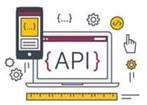



RAD is particularly useful for systems that are component-based and scalable, but suitable for more feature-rich projects that require longer development times. Clients assess a solution’s quality based one what they can interact with in a prototype. RAD requires frequent iterations and prototypes, and client’s expect to experience significant progress with each new release, but prototypes are often a facade. While developers are driven to find the best solution, sometimes they must forego best practise on the backend to accelerate development in the front-end prototype.

Much of our functionality – our extensions – have been pre-built so users can drag-and-drop core application elements to save further on time and money. Kissflow’s rapid application development platform is developed around the idea that businesses want solutions to make their life simpler. Unlike waterfall models, where customer and development teams work in silos, RAD requires frequent cycles of prototyping and inputs from all stakeholders. This means stakeholders must meet regularly and commit to collaborating and communicating frequently and when needed.
The Martin method was tailored toward knowledge intensive and UI intensive business systems. After the prototypes in the previous step are confirmed, the features and functions are finalized, and the construction of the final product begins. The construction of the final product is a lot faster than traditional methods since the modules for the decided features were already made in the prototypes.

Because the RAD framework focuses so much on making as many prototypes as required, this ensures that each and every function and feature is built completely, giving them the required attention. This allows for the product to have fewer defects and bugs, due to an emphasis on reusing code and using code generators. Team members must be highly skilled in order to quickly adapt to the fast pace development of the system. The team should also bear in mind that if any bugs or errors are to be found within the code, they should be efficient in solving them in the quickest time possible. In the RAD model, at the end of each iteration, the prototype is reviewed, feedback is provided by the client, and the requirements can/may need to be altered to match the desired functionality that the client wishes to have.
LogRocket identifies friction points in the user experience so you can make informed decisions about product and design changes that must happen to hit your goals. With LogRocket, you can understand the scope of the issues affecting your product and prioritize the changes that need to be made. LogRocket simplifies workflows by allowing Engineering, Product, UX, and Design teams to work from the same data as you, eliminating any confusion about what needs to be done. Rapid application development is well-suited for small and medium-sized projects where the application is intended to be delivered incrementally.
Components are moved to a live production environment, where full-scale testing occurs to identify product bugs. The most important thing you can do is select the right platform to build your apps. If you have extremely talented developers, they may be able to build these apps from scratch. But to speed up the development process, you’ll likely want to look at low-code options. It provides a user-friendly visual approach, allowing users and IT teams to build applications quickly and efficiently.
While rapid application development is gaining huge ground with teams to be agile and quick with development, it’s not a cure-all. For instance, RAD cannot handle long-term development as well as traditional SDLCs can. RAD can be extremely expensive, which makes it infeasible for companies with smaller budgets for their software requirements. RAD is also highly dependent on quick and accurate feedback, which is difficult when you can’t get in touch with your end-users at the drop of a hat. Rapid Application Development (RAD) methodology is a flexible way to create and deploy software applications quickly. The RAD method is effectively designed to adapt to changes and new inputs like features and functions, updates, etc.

Traditionally, developers work in silos devoid of feedback, so receiving feedback can be inherently difficult, time consuming and costly, involving long meetings and phone calls. RAD increases customer satisfaction levels through a commitment to a high level of collaboration and coordination. Clients work hand-in-hand with developers, who have the opportunity to frequently present work, and gain confidence that they are on track with satisfying the client when the final product is delivered. The incorporation of testing throughout the project lifecycle improves the overall software quality, validating and refining requirements based on user feedback. RAD is a good method for fast-paced environments with experienced teams that have the budget for rapid application development tools, like low-code platforms and code generators. RAD is particularly useful for small businesses delivering innovative products in a competitive market place that require a high degree of business involvement.
It is particularly suitable for web-based applications because prototypes can be delivered as soon as they are available for continuous feedback and optimization. Initially, Barry Boehm, James Martin, rad application development and a number of others saw that software was not limited to traditional methods of engineering. Rapid Application Development (RAD) was conceived in the 1980s, so it’s definitely not something new.

The constant feedback loop through prototypes makes software usable and value-driven. Unlike sequential, waterfall-driven processes, this brings quality starting from the early stage of product development. By incorporating agile methods, RAD helps the team focus on solving customer problems, validating assumptions, and addressing technical problems. RAD is an agile software development approach that emphasizes adaptive processes more than the sequential approach of a waterfall model.
Rapid delivery accentuates reusability of components in order to reduce overall development time, and this can only be successful with a strong, invested team. RAD should only be used when a system can be modulated to be delivered incrementally. If you need to build an internal business tool or a customer facing portal, RAD can assist you to deliver better experience to your end users.
Another striking feature of this model is a short time span i.e. the time frame for delivery(time-box) is generally days. It provides a user-friendly visual approach, allowing users and IT teams to build applications quickly and efficiently.One of the main features of Kissflow is its low-code capabilities. Users can leverage pre-built, customizable code blocks to construct applications from scratch. This feature enables users to develop and modify enterprise-grade apps without extensive coding knowledge, making the process more accessible and efficient. RAD is especially well suited for (although not limited to) developing software that is driven by user interface requirements. Graphical user interface builders are often called rapid application development tools.
Other approaches to rapid development include the adaptive, agile, spiral, and unified models. Rapid application development (RAD), also called rapid application building (RAB), is both a general term for adaptive software development approaches, and the name for James Martin’s method of rapid development. In general, RAD approaches to software development put less emphasis on planning and more emphasis on an adaptive process. Prototypes are often used in addition to or sometimes even instead of design specifications.